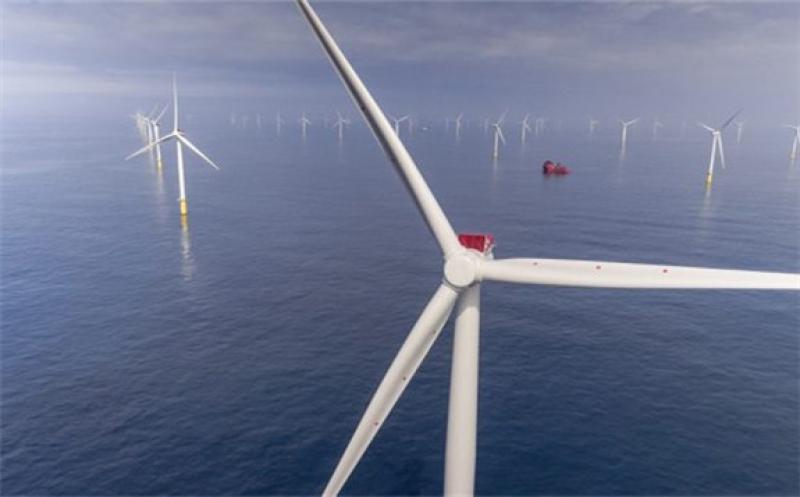Developer SSE Renewables – which with partner Equinor is building the world’s biggest offshore wind farm, the 3.6GW Dogger Bank in the UK North Sea – has sketched out a ‘road map’ to get Britain to its target of having 40GW of sea-based turbines turbine by the end of the decade.

The nine-point action plan was devised to direct governments, regulators, industry and delivery bodies in the steps which they must “urgently take … to remove barriers” to the country’s building out its expanded ambition of adding some 30GW to the existing installed plant by 2030, said the company.
“The UK offshore wind industry has already proven the technology can be deployed at scale, on time and at low cost, but there are still barriers being faced by this crucial, low carbon technology,” said SSE Renewables, in a statement in the “high level roadmap”.
“We believe that delivering 40GW by 2030 is only feasible provided enabling actions are taken by government, regulators and stakeholders. Such a significant ramp up in deployment requires a corresponding increase in capabilities and cooperation across government departments as well as within the offshore wind industry.
“Business as usual is not an option. To this effect, we suggest that a delivery plan is developed, building on the [government-industry] offshore wind ‘sector deal’ but ensuring that it is fit for achieving 40GW.”
SSE Renewables director of capital projects Paul Cooley said: “While everyone across government, industry and business is rightly focused on the here-and-now of dealing with coronavirus, it is important we continue to do all we can to deliver the low-carbon energy infrastructure we need to address the continuing climate emergency, which remains as profound and present as it was two months ago.
“The action plan published by SSE Renewables today sets out an achievable roadmap that will see the UK overcoming current barriers and setting the country on a course to delivering 40GW by 2030.”
The SSE Renewables roadmap highlights fast-approaching hurdles for the UK offshore wind market, including consenting risks, electricity market design, auction timelines, grid connections and floating wind build-out, underlining that the 40GW by 2030 target, set out in the UK government’s general election manifesto last year, “is part of a much bigger, but vital, goal of achieving net-zero emissions by 2050”.
“Delivering 40GW of offshore wind will be the backbone of the UK’s net zero energy system, but we need vital enabling actions to meet this new 2030 target,” said Cooley. “If we fail to remove the barriers to deployment now, we risk failing to achieve 40GW of offshore wind by 2030 and in turn our over-riding net zero 2050 target.
The government’s climate consultancy body, the Committee on Climate Change, has calculated that at least 75GW of offshore wind will be needed to achieve net zero by mid-century.
Britain is currently on track to have 20GW of offshore wind online by mid-decade, with annual build-rates needing to climb from around 2-2.5GW a year up-until-2025 to as much as 4GW between 2025 and 2030 to reach the 2030 40GW target.
“We have always believed that the offshore wind industry can achieve more and welcomed the UK government’s manifesto commitment to increase the offshore wind target to 40GW by 2030, but now we need to turn targets into action plans,” said Cooley.
“Some of the current offshore wind projects have taken a decade to develop. These timelines willabsolutely notwork for the ramp up in offshore wind needed.”
SSE Renewables has the largest offshore wind development portfolio in the UK and Ireland, with a pipeline of over 7GW of projects, including the 588MW Beatrice under construction off Scotland, and Dogger Bank, awarded last year by the UK government as part of its latest contracts for difference round and set to singlehandedly meet 5% of Britain's total energy demand once producing power in 2026.
The UK government last week moved to reassure the renewables industry that it won’t postpone next month’s consultation deadline on possible changes to its Contracts for Difference (CfD) scheme — or delay timing of next year’s Round 4 auction — despite the difficulties thrown up by the coronavirus pandemic.
Adding 30GW of wind power at sea within a decade will be a mammoth undertaking, necessitating the installation of one 10-12MW turbine every weekday throughout the 2020s, about £48bn ($62.3bn) of investment and a further 20GW of tenders within the next few years, according to analyst Aurora Energy Research.
Gunnar Herzig, managing director of global industry advocacy body World Forum Offshore Wind, stated: “We fully support this roadmap to reach 40GW of offshore wind capacity in the UK by 2030. Especially the expansion of floating wind is absolutely essential for the UK in order to reach this target.
“WFO’s newly launched Floating Offshore Wind Committee is going to deliver concrete measures how to accelerate the commercial-scale build-out of floating offshore wind in the UK and around the world.”
The UK is currently the global offshore wind market leader, with over 9GW in service, the world’s largest operating project in the 1.2GW Hornsea 1, and a national support mechanism in the CfD that has driven energy prices down rapidly and awarded 5.5GW of new capacity in September.